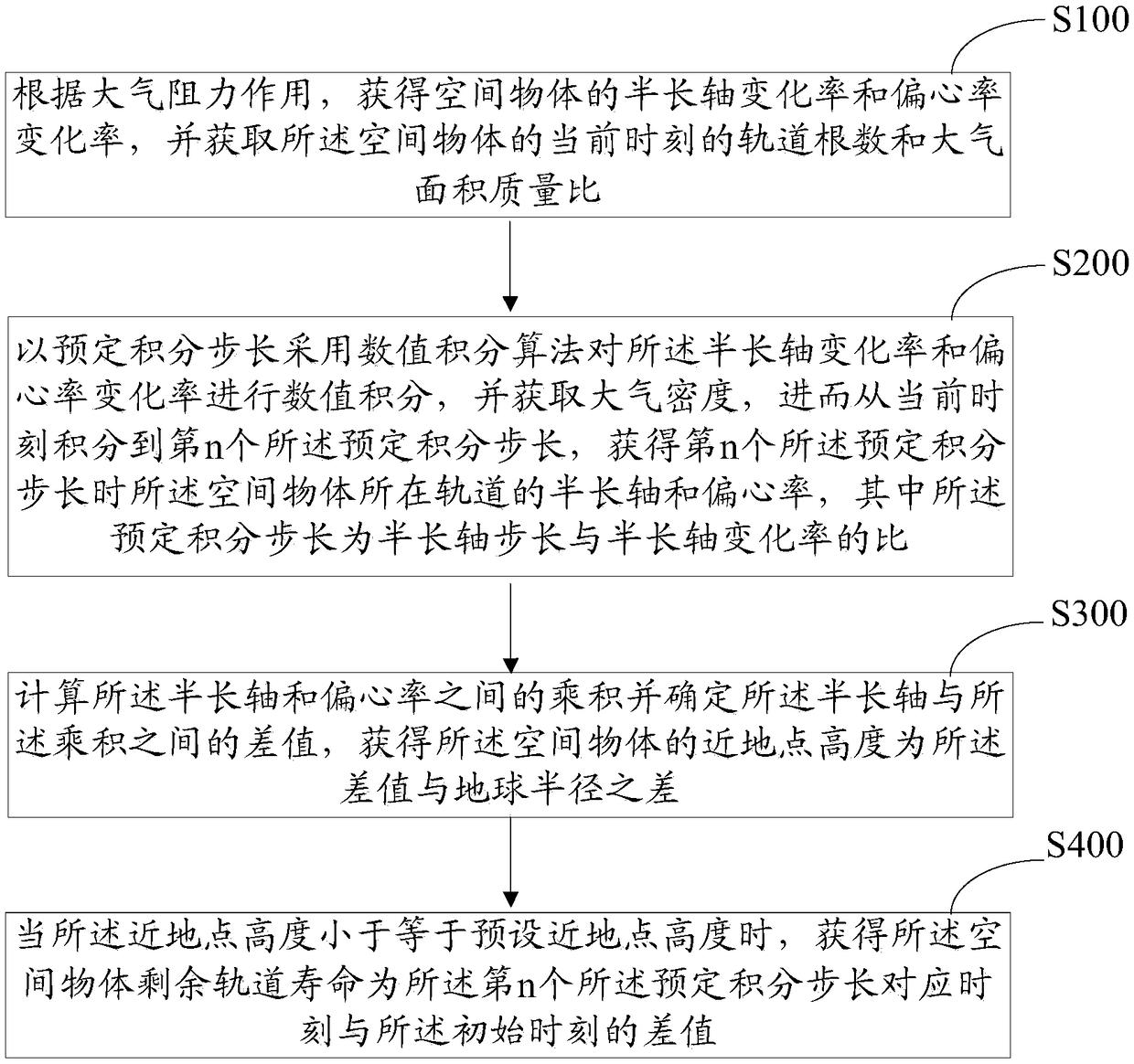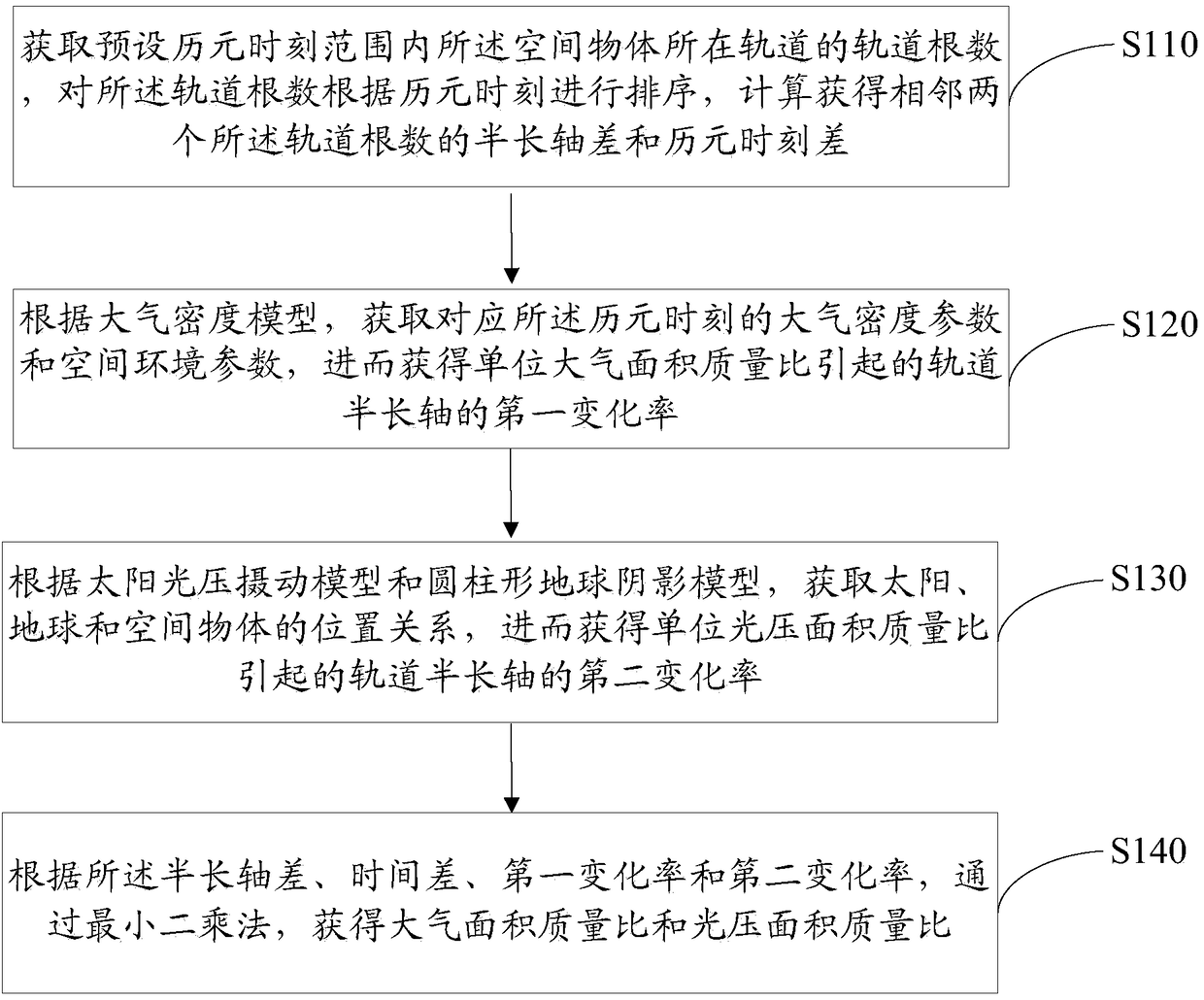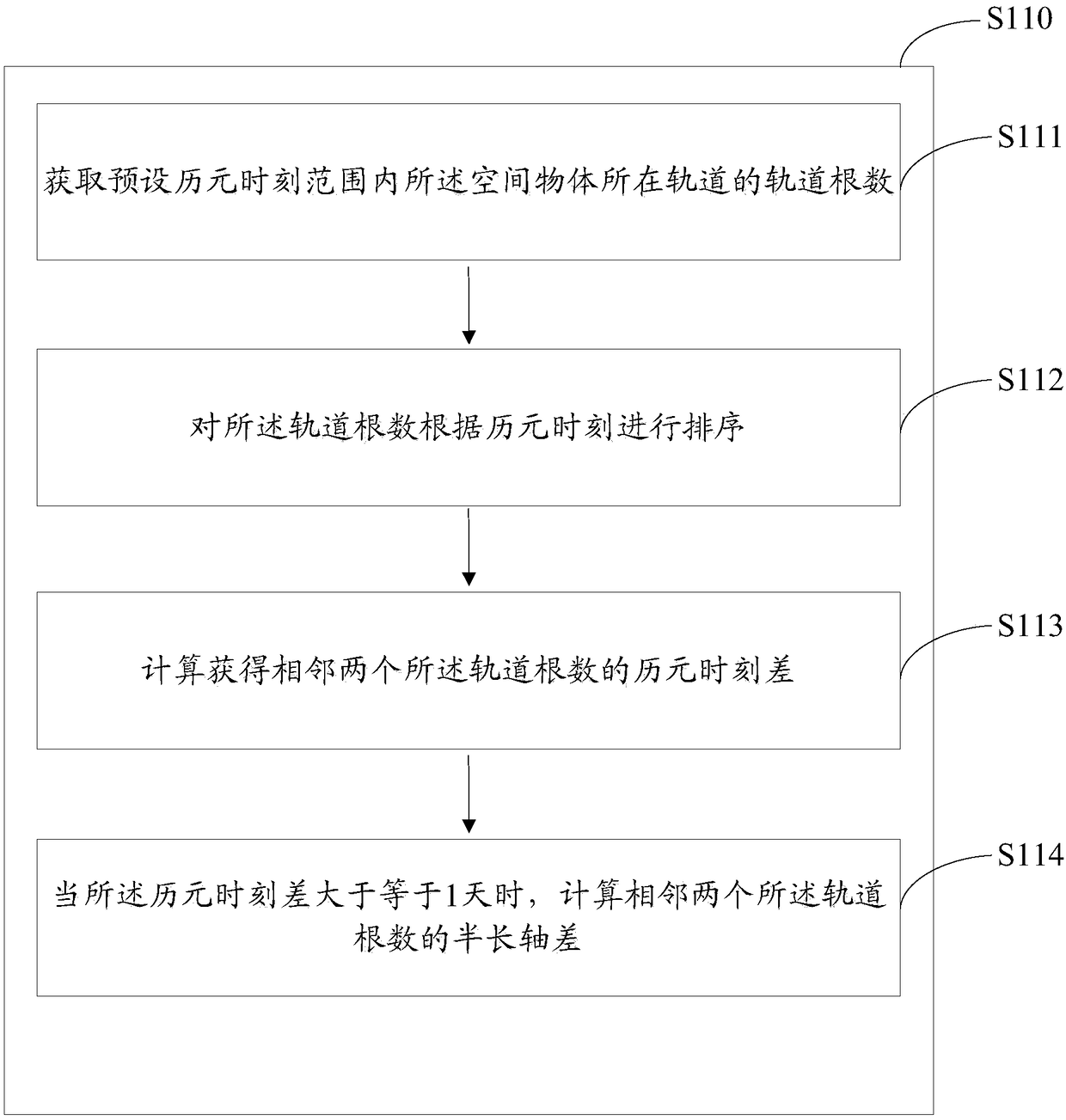Method, system and apparatus for obtaining residual orbital lifetime of space object in low earth orbit
A space object and low-Earth orbit technology, applied in computer-aided design, design optimization/simulation, special data processing applications, etc., can solve problems such as incomplete burning, landing on the ground, slow calculation speed, etc., and reach low-Earth orbit The effect of fast remaining orbital life of space objects
- Summary
- Abstract
- Description
- Claims
- Application Information
AI Technical Summary
Problems solved by technology
Method used
Image
Examples
Embodiment Construction
[0045] In order to make the object, technical solution and advantages of the present invention clearer, the present invention will be further described in detail below in conjunction with the accompanying drawings and embodiments. It should be understood that the specific embodiments described here are only used to explain the present invention, not to limit the present invention.
[0046] figure 1 It is a flow chart of a method for obtaining the remaining orbital lifetime of a space object in low-Earth orbit according to an embodiment, and the method includes:
[0047] Step S100, according to the effect of atmospheric drag, obtain the semi-major axis change rate and eccentricity change rate of the space object, and obtain the orbital elements and the atmosphere area-to-mass ratio of the space object at the initial moment.
[0048] Specifically, according to the effect of atmospheric drag, the rate of change of the semi-major axis and the rate of change of the eccentricity of t...
PUM
 Login to View More
Login to View More Abstract
Description
Claims
Application Information
 Login to View More
Login to View More - R&D
- Intellectual Property
- Life Sciences
- Materials
- Tech Scout
- Unparalleled Data Quality
- Higher Quality Content
- 60% Fewer Hallucinations
Browse by: Latest US Patents, China's latest patents, Technical Efficacy Thesaurus, Application Domain, Technology Topic, Popular Technical Reports.
© 2025 PatSnap. All rights reserved.Legal|Privacy policy|Modern Slavery Act Transparency Statement|Sitemap|About US| Contact US: help@patsnap.com



